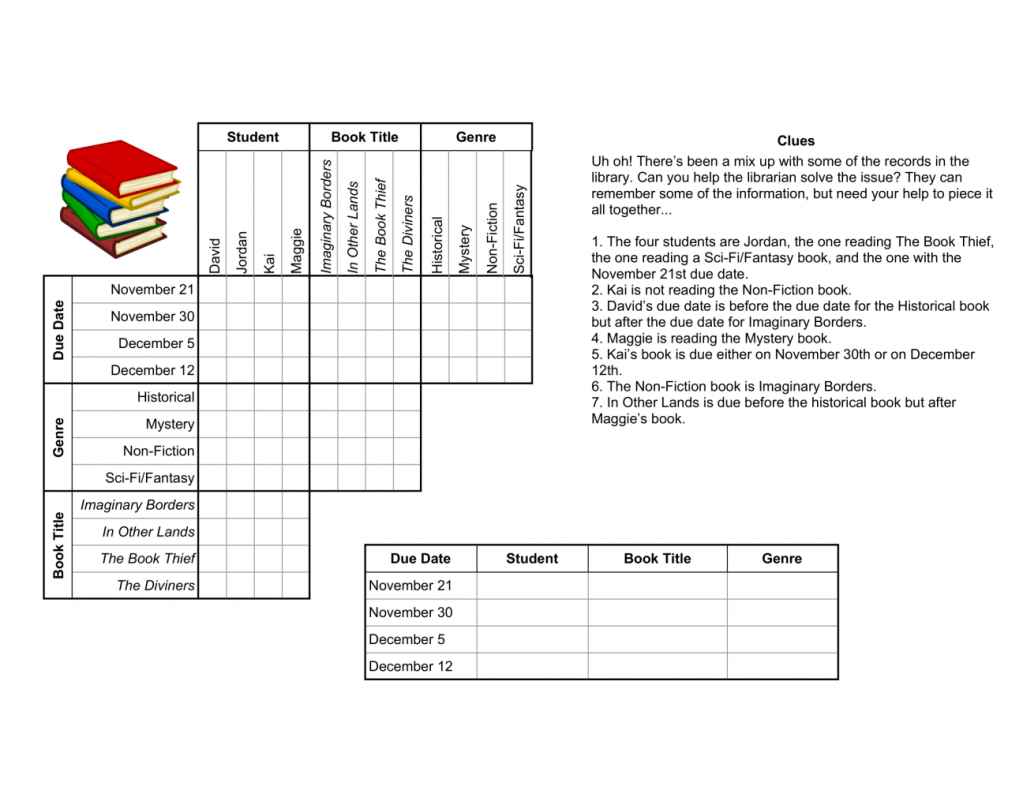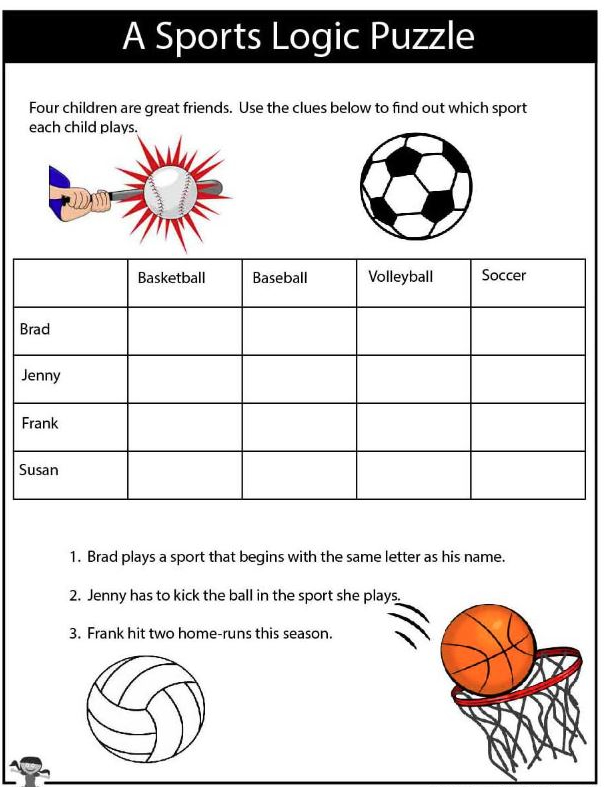One of the best things about being a teacher is the chance for a redo. No matter how large a dumpster fire a school year might be (Goodbye and good riddance, 2021-2022!), the chance to start fresh in the fall is what keeps me motivated and excited about possibilities for the following year.
I use the end of June to reflect on what worked and what didn’t work in my class so I can adjust for the following school year, whether the practices relate to instructional practices or classroom management. This is the first year I decided to put those reflections into a blog post, that way I can revisit this post in September when school starts again. Here are my reflections on the 2022-2023 school year.
Things That Worked This Year
Logic puzzles. If you read this post, you know that I started incorporating the use of logic puzzles into my classroom after hearing the suggestion in the book Common Ground by Dr. Florencia Henshaw and Maris Hawkins. This activity is a keeper since it requires students to use some higher order thinking skills to solve the puzzles. Also, it can be used as a way to engage in whole class interpersonal communication. Next year I may tweak this a bit so that students who need extra help can work in a small group with me while my high flyers work independently.
Un Peu de Géo/Une Personne Célèbre. If you have read this post, you know that I have started giving students a French text describing a place in the French-speaking world or a biography of a well-known Francophone figure. Then students research to find the name, put the name on a piece of scrap paper, and, if they are correct, their name gets entered into a drawing for a piece of candy. Just like with logic puzzles, I may include a small group option for weaker students. In addition, I may also follow up with a short quiz for accountability.
Flexible seating. In my classroom, students sit at a table with a maximum of two students per table. During individual work time and story time, I allow students the choice to sit anywhere they want (this includes on the floor, on a table, or in one of the special chairs in my classroom). I have found that students really like this option and, for the most part, can be trusted to do their assignment responsibly and honestly. However, I still do have a seating chart in my room. I require students to sit in their assigned seats when they come into class to control the chaos since I don’t want them to think that my class is a free-for-all. In addition, I’m going to see if I can add even more seating options in my classroom, like wobble stools and beanbag chairs.
Expectations. In my first years as a teacher, I reviewed behavior expectations on the first day of school and posted them once I got my own classroom but hardly ever mentioned them again. This year I reread the book The First Days of School before school started up in August. Based on what I read, I decided to review my behavior expectations every day for practically the first month of class. After that, I reviewed them after every extended school break or any time I was not satisfied with my students’ behavior. Things weren’t perfect this year as a result of this practice but definitely been better than in previous years.
I also made a habit of reviewing my expectations before doing certain class activities that have been problematic in the past, like interpersonal conversations, group work, or pair work. For example, in previous years I was constantly annoyed when students would answer even the simplest French questions in English whenever I tried to have a structured conversation with them. This year, before we did this sort of activity I reminded my students that I expected them to answer in French (which I know they are capable of doing, especially since they have supports like Chat Mats). We’re still working on this but I have seen an improvement this year in staying in the target language.
Feedback. I have graded summative assessments with a rubric for a few years know. This year, a colleague and I added feedback to the rubric so students know what their strengths are and what they need to do if they want to improve their performance on future assessments. This is great because students know exactly what they need to do to improve their performance and gives them language they can use to talk about their progress. It’s also helpful when parents ask my advice for struggling students, since I can direct them to concrete and specific suggestions on the assessment rubric.
Manie Musicale. This is the first year that I participated in this event. This is an international competition that takes place during March. Students vote for their favorite French-language artists bracket-style (If you are a French teacher and are not familiar with Manie Musicale, click here for more information).
I thought my class would enjoy this but I was completely unprepared for how invested they were! Many students said that this was their favorite activity that we did this year and have already asked if we are going to do it next year. They liked this activity so much that I think I will have a mutiny on my hands if we don’t do it again.
Free Voluntary Reading (FVR). This worked somewhat. In my first-year class, I got a lot more buy-in from my students. Most of them interacted with either a French reader, Le Petit Journal Francophone, or issues of the Allons-Y Mary Glasgow magazine series. This is most likely due to the fact that they are mature and dedicated students overall but also because I invested a good deal of time talking about FVR before they started reading on their own. In my second-year class, I erroneously thought that I wouldn’t need to prepare them as much for FVR ahead of time because they were older and had higher proficiency levels than the students in my first-year class, so I didn’t really explain my expectations well or get them excited for reading. This led to less buy in and more off-task behavior. I will not make this mistake next year.
Things That Didn’t Work This Year
My Cell Phone Policy. It is unbelievable how pervasive unauthorized cell phone use has gotten in schools, even with middle school students. It is also shocking that many students think that it is perfectly fine to take out a cell phone at any point in class and use it. In my class, some of my students had the nerve to act surprised when they are asked to put it away or surrender it. If there is any one policy that I need to enforce with consistency, it needs to be this one. I was constantly telling students to put their phones and ear buds away this year. I even had a few kids who hid their ear buds under long hair.
Spanish teacher Anne Marie Chase mentioned cell phone use and abuse in her latest blog post. Next year, she has plans to project a slide reminding students that they need to put their phones and ear buds in their backpack at the beginning of EVERY class. I am going to follow suit. That way, nobody will be surprised when I confiscate a device.
Notetaking. For years, I have not required students to take notes. I have decided to rethink this policy because I have had a number of parents complain that their child wants to study but doesn’t have anything to study. This is not entirely true since I house materials online, but in order to be equitable and reduce screen time, It’s not a bad idea for students to have a hard copy. In addition, having students take notes might be a good calming strategy for my energetic students, and might also ease the anxieties of my more anxious students who feel that they need to write things down.
I’m going to issue all students a composition book. Since I introduce new units with a vocabulary slide in my class, I plan to have students write down their new words. I will also have students use their notebooks when we do Write and Discuss in class. I’m planning to house student notebooks in my classroom so they won’t get lost. Since I see students for three years in a row, at the end of their third year they will be able to take home their notebooks to use as a reference for their high school French classes.
Student Check-ins. My new friend Evan Downey gave a great presentation at NECTFL this past March about daily check-in forms. He requires students to fill out a check-in form every day. Then he reads student comments and, if he needs to, he has a private conversation with any students who indicate that they might be struggling. In some cases, he may even loop in a guidance counselor.
This sounded great to me, so I started implementing this in my own classroom. It was not a successful experiment. Evan teaches at a school with bells, meaning that all students have to be in a seat before the late bell. As soon as the late bell rings, students know to stop what they’re doing and fill out their Check-In form. Then they all roughly finish at the same time and Evan can officially begin class.
At my school, we have no bells. Students have roughly five minutes to get from one class to another. Depending on what part of the school students are coming from, I may have some students show up at 9:00 but others don’t show up until 9:05. So while some students had filled out the check-in form at 9:00 and were ready to move on, students who arrived later didn’t fill theirs out until 9:05. Soon, those who had filled out their form at 9:00 grew restless waiting for other classmates to finish. Then they started socializing, which distracted those kids who still needed to fill out the form and led to their taking even more time to check in.
I still do believe that doing a daily check in is a promising practice, but I just don’t know if I can do this successfully since we don’t have bells at my school. I’m going to think about this over the summer and reassess. If I can come up with a solution that fixes the problems I’m having with this, I may try this again next year.
Rewards-Based Systems. I recently read a part of Alfie Kohn’s book Punished By Rewards. I was floored by the mountain of research that demonstrated that people promised an incentive upon completion of a task produced inferior results when compared with those that do not offer an incentive upon task completion. In a nutshell, rewards-based incentive simply don’t work. This revelation has caused me to rethink a number of practices regarding homework and grading.
That’s it for me this school year. Enjoy your summer! I look forward to seeing some of you in Savannah at the CI Summit, where I will be presenting. Hope to see you there!






